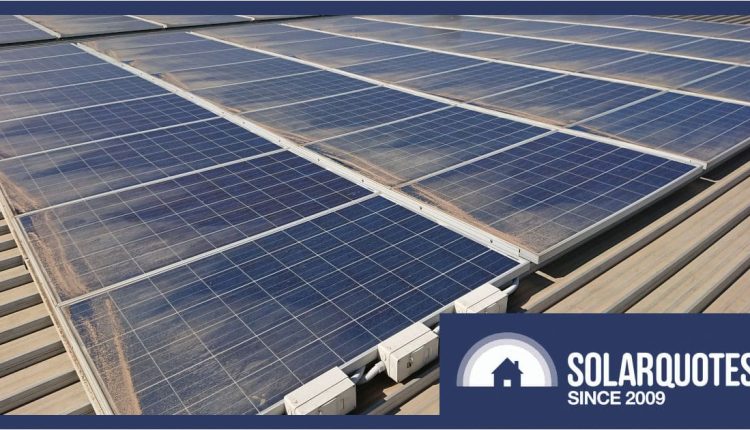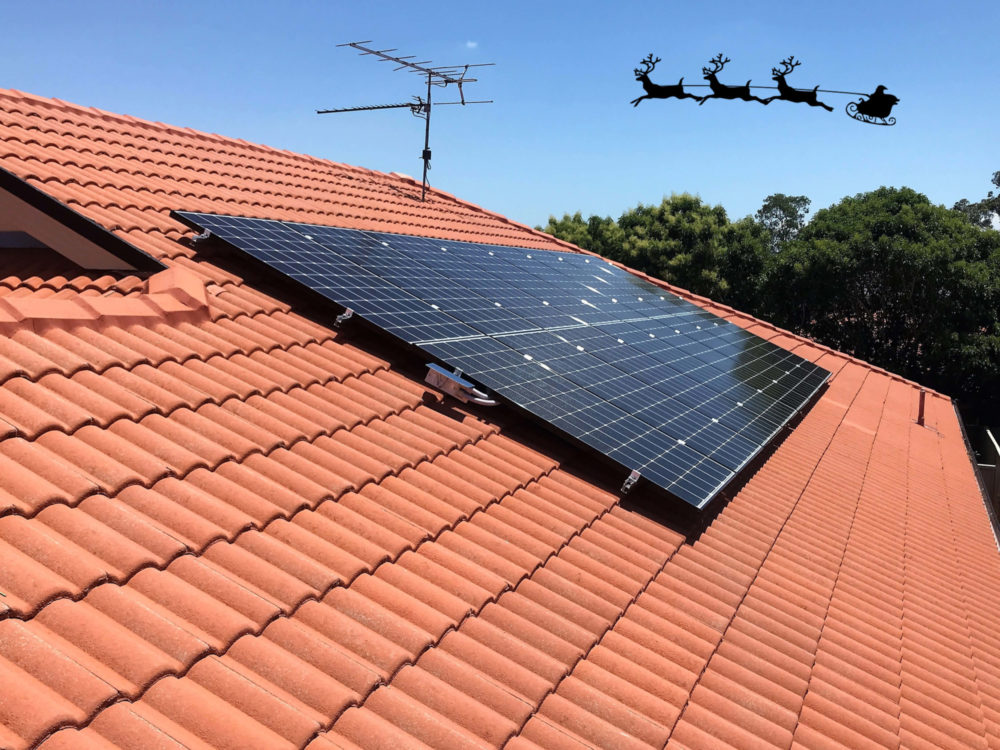Self-Cleaning Solar: Why You Should Avoid Flat Solar Panels
You may have heard that flat solar panels require regular cleaning, but those angled at 10° or more don’t. But is it really true?
In a nutshell, yes. Solar panels angled above horizontal wherever possible can give give better returns with less maintenance. Here’s why.
Flat Solar Panels Get Flat-Out Dirty
Some years ago I was sent to diagnose a poorly performing system on a local council office. This may interest you : Contec completes solar set up at international headquarters. It was a modern building with a low-pitch deck roof of perhaps 1° or 2°. The solar was parallel to the roof, and essentially flat.
Checking the array voltage and short-circuit current proved there was DC available, however overcast conditions meant it was impossible to properly test how well the solar panels were working.
The tech support people could see it was online, but this particular model should never throw the particular fault codes we were seeing. We agreed it was toast and processed a warranty claim.
Cue my surprise when co-worker Mitch hung the new inverter, and it still didn’t work.
When Mitch clambered onto the roof he found a heavy layer of dirt built up on the array, concentrated on the lower edges of the panels.
After a good deal of hose and broom work the system performance was restored, but it was a vivid demonstration of what a dust storm in a country town could do.
These flat solar panels are flat-out filthy.
Self-Cleaning Solar Will Always Work Better
It makes perfect sense that every shower of rain should rinse your panels clean, not concentrate dirt on them. This may interest you : array. Even the most disciplined and fastidious hose owner isn’t going to specifically clean their panels every week.
Here we have streaks of dirt across low-pitch panels on the left, while clean panels on the right are pitched up and cast shadows. If these panels were angled back-to-back there would be room for a whole extra row.
This is why the CEC guidelines for solar installation call for at least 10° pitch on solar arrays.
If your array doesn’t have this slope, then your handover pack (which details everything you need to know about the system) must have a specific warning: the yield you were promised in your initial quote will only be maintained with regular extra cleaning.
These panels fall towards each other, but the array on the left has slightly more pitch so stays cleaner.
Breaking The Surface Tension Helps
Believe it or not, I’ve found gum leaves help keep an array clean. See the article : AEP Power secures PPA for mammoth solar challenge. Sitting in just the right place across the edge of the frame, a simple leaf breaks the surface tension of pooled water, creating a drain path over the edge.
Finding one dry panel in a row of five prompted me to install a gum leaf. Hey presto, panel drained.
Solarud’s drain clips operate on this same principle. While I haven’t used them personally, their easy installation and potential to reduce cleaning frequency means they can’t hurt.
You can see the meniscus of water draining away from this panel, dripping from the bottom of the Solarud clip.
What About Frameless Solar Panels?
While frameless panels are available, they’re fussy to install, easily damaged and require a maintenance schedule to check the torque of the clamping bolts every year or so. That’s why almost all solar panels have an aluminium lip around the edge. When they’re laid flat (or close to), the dust that inevitably builds up gets washed to the lowest edge, but not washed off.
Some manufacturers include drain grooves in module frames to prevent water pooling, which I think should be an industry standard, but sadly isn’t common.
Angled Panels Have Other Advantages
Cooler Running
Lifting panels off the roof means they’ll run cooler, and produce more energy than flat solar panels because of it.
Easier Maintenance
It also means array wiring is more easily installed, and plugs can be clipped out of the weather. The height is also a boon for electricians trying to diagnose possible earth faults, plus this increased serviceability will negate one of the disadvantages of microinverter or optimiser systems: having to remove panels to access failed hardware.
Easier Cleaning
If you’ve ever had to remove a pigeons’ nest or a buildup of flammable leaf litter, you’ll appreciate that accessing the space under the panels can be incredibly difficult — to the point that removing the whole array becomes the only option.
That means extra traffic on the roof; seized and broken hardware; and potential electrical issues from disturbed wiring and unsealed plugs. Being able to clean without opening that can of worms is another huge advantage.
This old array was a bit of a fire hazard, besides the bad cabling.
While the wind can help keep a roof clean, some pitched frames cause a buildup of leaves.
Believe it or not, I’ve had real difficulty removing leaf litter because my garden blower isn’t strong enough to break apart leaves clumped by spider webs. So being able to get under the array is priceless.
Crinkle Cut Solar Should Be The Standard
With flat solar panels, there’s a risk people will treat it like any other part of the roof and just traipse across the array, causing untold and invisible damage by smashing the wafers under the glass.
Either they don’t know or don’t care, but these two construction workers have just wrecked whatever part of the array they’ve walked on.
Angled arrays placed back-to-back can make it easier to create any necessary access paths.
Not only are these arrays from Positronic Solar in Brisbane self-cleaning, they have access for servicing.
Best of all, you can avoid long shadows that limit panel coverage and solar yield on a given roof. It’s more wattage for winners.
East-West tilted panels are recommended on a flat roof, for more energy at the beginning and end of the day. But even it you have to tilt North-South, the 10° angle won’t damage the yield as much as a thick layer of dirt.
Angled Panels Last Longer
If you still need convincing to avoid flat solar panels, please be aware that tilting solar panels also prevents water pooling, meaning you don’t risk the panel warranty.
Perhaps most importantly, you avoid the annoying reliability problems that come from moisture ingress and show-stopping earth faults.
So, please, if you have a flat roof, tilt your solar panels at least 10º, ideally in an east-west, back-to-back arrangement. Your panels and your electricity bill will thank you even if your local solar panel cleaning company won’t.
Sparkling clean, East-West tilted solar panels on a tricky flat roof.






Comments are closed.